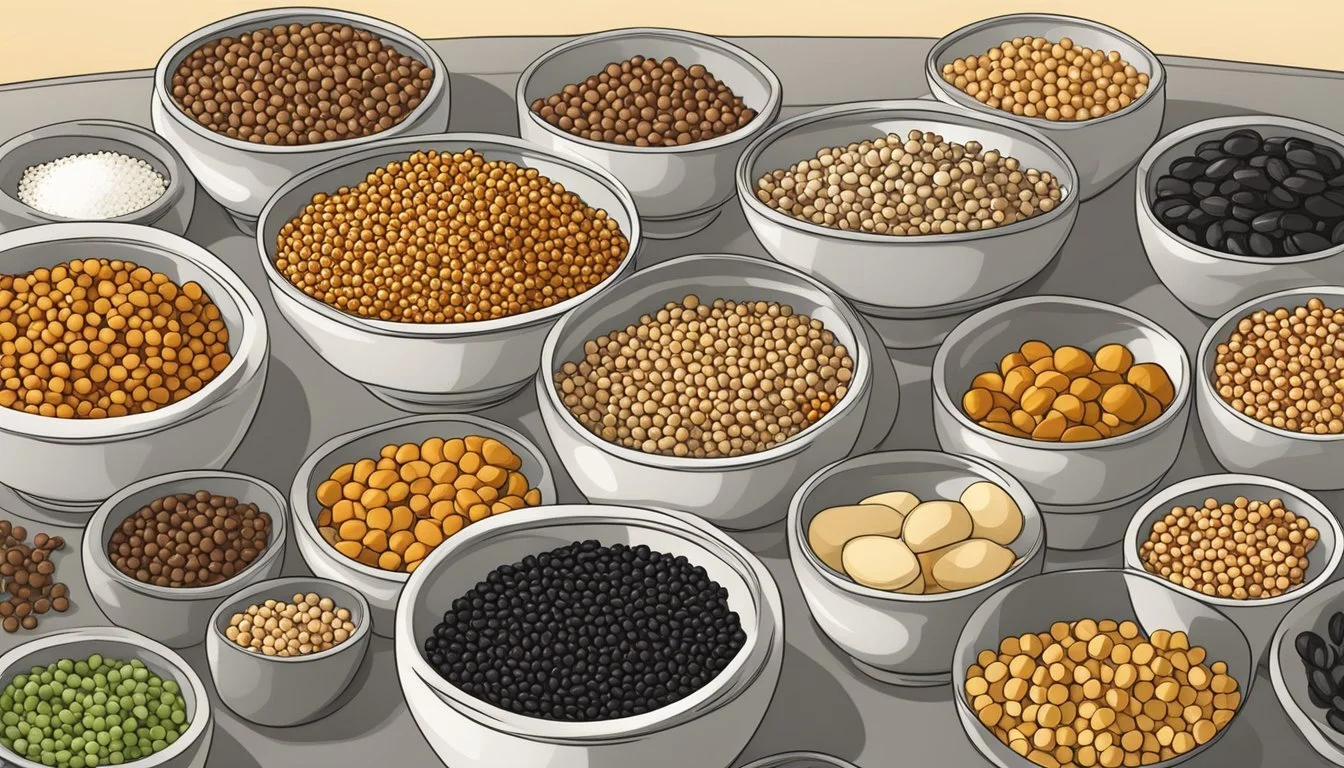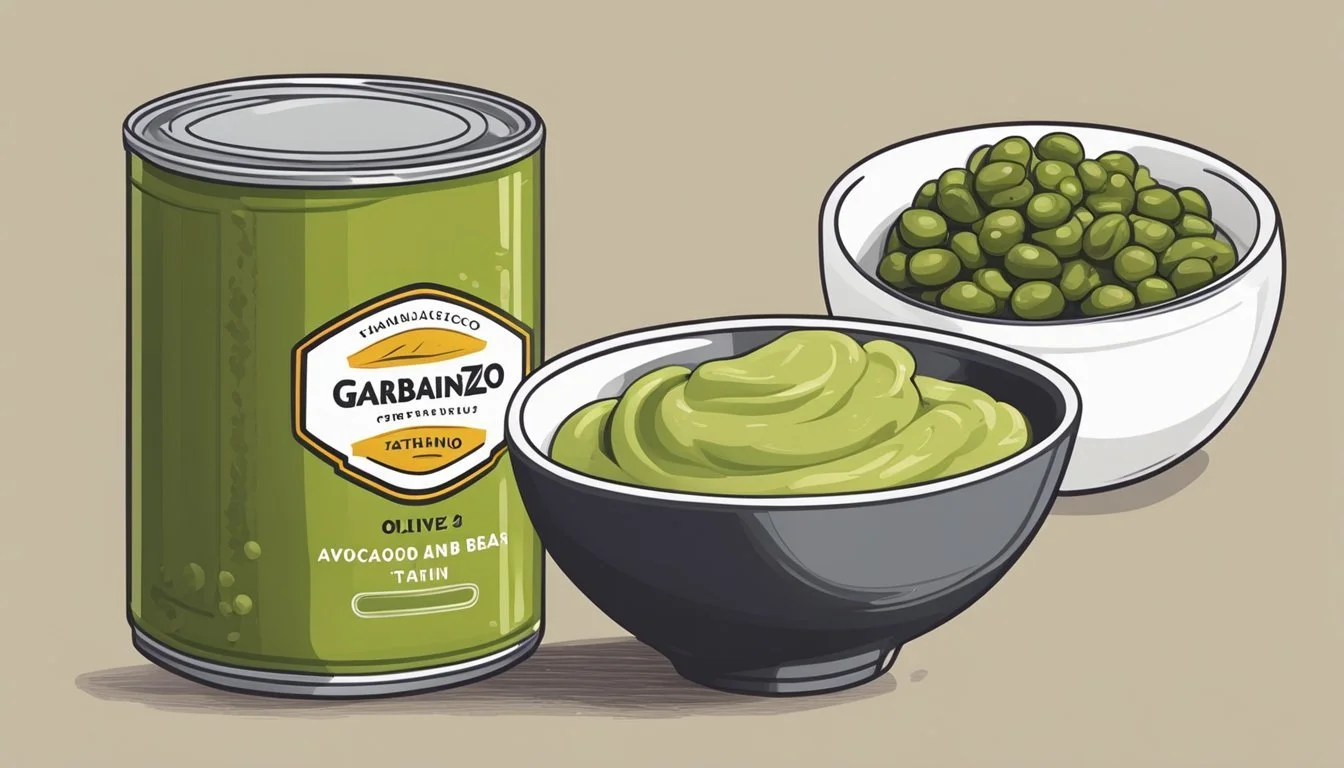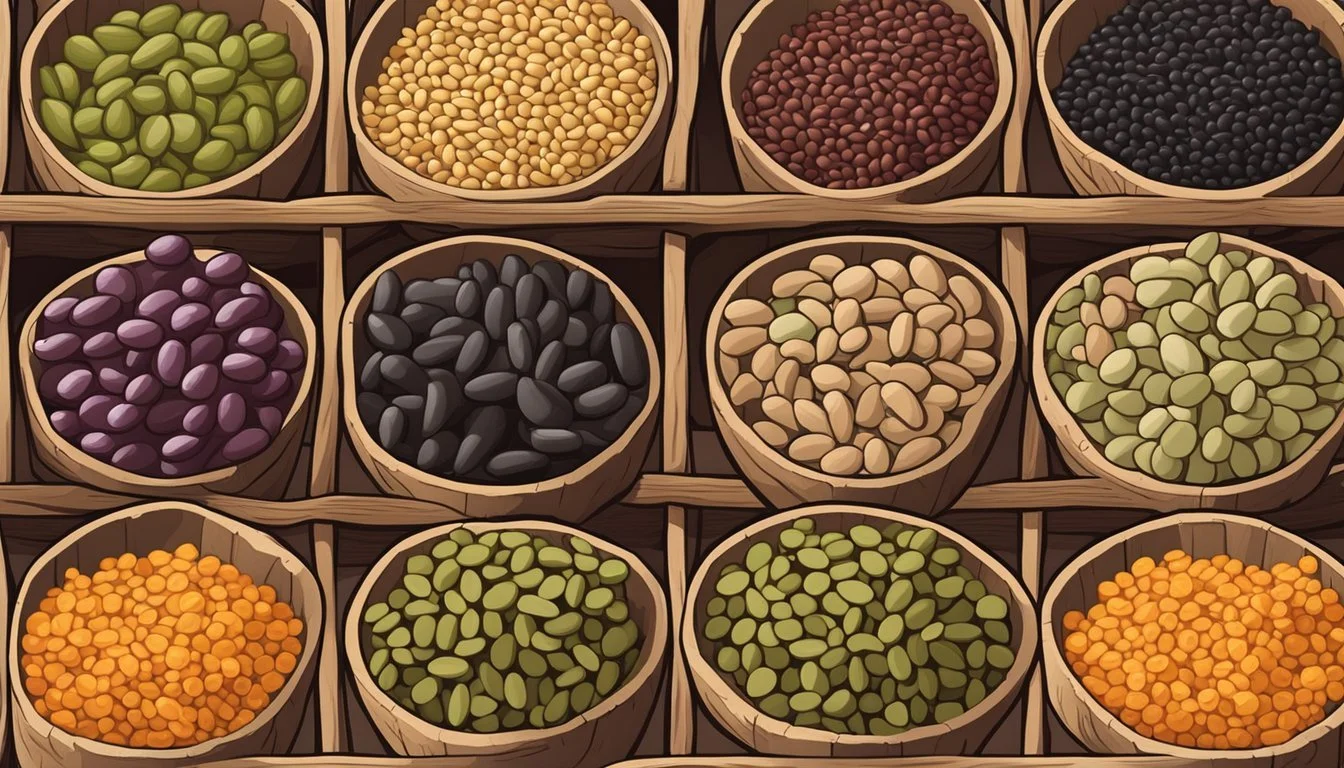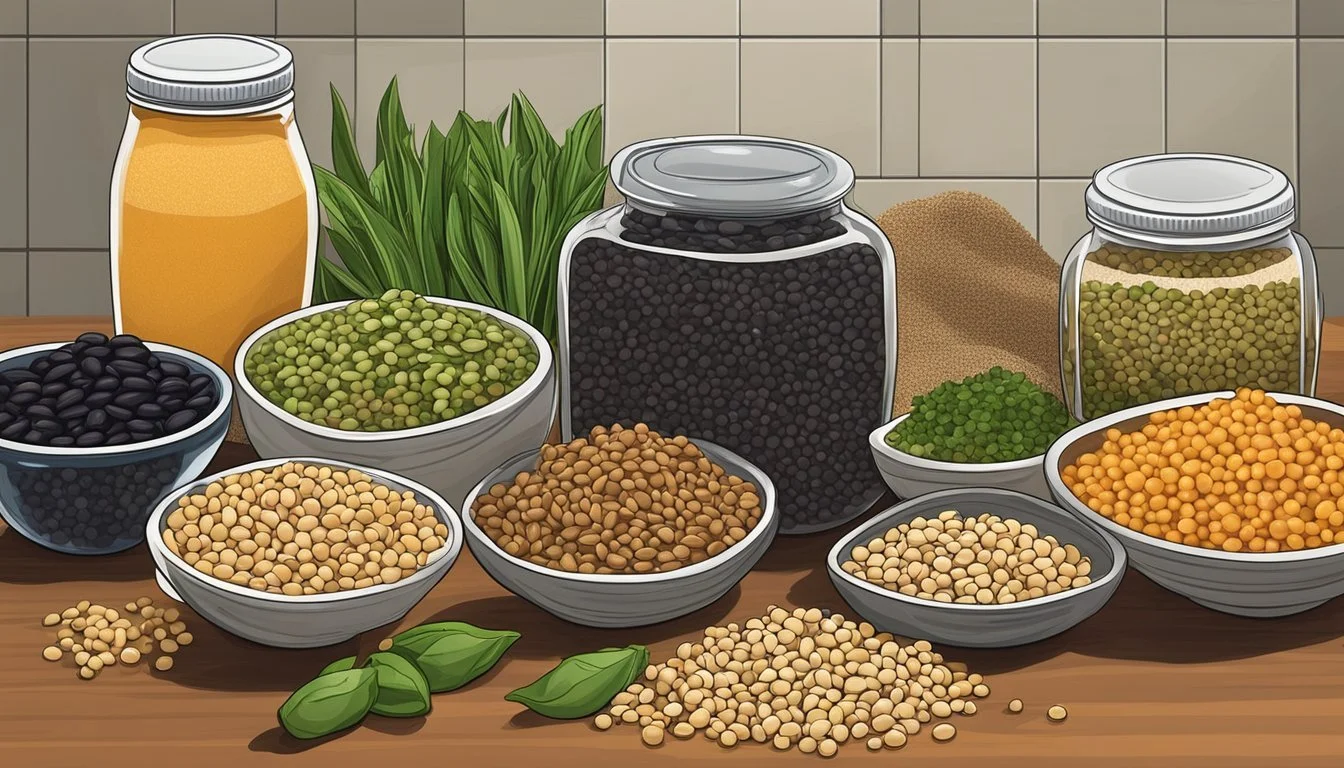Garbanzo Beans Substitutes
Top Alternatives for Every Recipe
Looking for substitutes for garbanzo beans? These versatile legumes, also known as chickpeas, are renowned for their nutritional benefits, providing a rich source of protein and fiber, making them a staple in vegetarian and vegan diets. However, various alternatives can easily replace garbanzo beans in recipes without compromising on taste or texture.
Lentils, a member of the legume family, serve as a fantastic substitute due to their similar nutritional profile and versatility. Cannellini beans are another excellent choice, particularly in soups and stews, thanks to their creamy texture and mild flavor. For those looking for a unique twist, hazelnuts can also be used in specific recipes, offering a distinct taste and crunch.
Understanding the right substitute for your dish can elevate your culinary experience. Many of these alternatives not only match the nutritional benefits of garbanzo beans but also bring their own unique flavors and textures to the table.
Understanding Garbanzo Beans
Garbanzo beans, also known as chickpeas, are an essential ingredient in many cuisines. This section explores their nutritional profile, culinary uses, and the different varieties available.
Nutritional Profile
Garbanzo beans are renowned for their impressive nutritional value. Rich in protein, these legumes are a popular choice for vegetarians and vegans. For every 100 grams, garbanzo beans provide approximately 19 grams of protein.
They are also a great source of dietary fiber. This helps in digestive health and can aid in maintaining a healthy weight. Chickpeas are packed with essential vitamins and minerals such as folate, iron, magnesium, and phosphorus. Their low glycemic index makes them suitable for managing blood sugar levels, providing sustained energy release.
Culinary Uses
Chickpeas are incredibly versatile in the kitchen. They can be used in a variety of dishes ranging from soups, stews, and salads to being the main ingredient in popular dishes like hummus and falafel.
In their whole form, garbanzo beans can be roasted for a crunchy snack or added to salads for extra protein. When ground into flour, chickpeas can be utilized in baking and for making pasta. Their nutty flavor and creamy texture make them a perfect addition to many Mediterranean, Middle Eastern, and Indian recipes.
Varieties of Garbanzo Beans
There are two main types of garbanzo beans: Kabuli and Desi.
Kabuli beans are larger, with a smooth coat and lighter color. They are commonly found in Mediterranean and Middle Eastern dishes.
Desi beans are smaller, darker, and have a rough coat. They are predominantly used in Indian cuisine and have a higher fiber content compared to Kabuli beans. Each type lends itself to particular culinary uses and regional dishes, making garbanzo beans a diverse and valuable ingredient in kitchens around the world.
Common Substitutes for Garbanzo Beans
Garbanzo beans, also known as chickpeas, can be substituted with a variety of ingredients depending on the recipe's requirements. Each substitute offers unique flavors and textures, making them suitable for different culinary applications.
Lentils as a Substitute
Lentils are a versatile and nutritious alternative to garbanzo beans. They come in a variety of types including red, green, and yellow lentils. Red lentils are quick to cook and often used in soups and stews for their smooth texture. Green lentils hold their shape well, making them ideal for salads and side dishes. Yellow lentils, on the other hand, have a milder flavor and cook faster than green lentils.
Other Beans That Can Replace Chickpeas
Other beans provide good substitutes due to their similar texture and nutritional profiles. Kidney beans, black beans, navy beans, and pinto beans are common choices.
Kidney beans: Firm texture and slightly sweet taste, suitable for stews and salads.
Black beans: Soft texture and earthy flavor, great for soups, salads, and stews.
Navy beans: Small, tender, and mildly flavored, good for casseroles and soups.
Pinto beans: Soft texture and earthy flavor, perfect for dips and Mexican cuisine.
Peas and Edamame in Recipes
Green peas and edamame can replace garbanzo beans in many dishes. Green peas are sweet and tender, commonly used in salads and soups. Edamame, young soybeans, are slightly nutty and often used in Asian cuisine. They add a fresh, vibrant touch to stir-fries, rice dishes, and salads. Mixing peas or edamame with other legumes can enhance the texture and nutritional value of recipes.
Grains and Seeds Alternatives
Grains and seeds can also serve as substitutes, providing different textures and health benefits. Quinoa is a popular choice, offering a nutty flavor and high protein content. Buckwheat and millet are other good options, suitable for salads and side dishes. Sunflower seeds and pumpkin seeds can add a crunchy texture to salads and stir-fries when garbanzo beans are not available.
Nut And Soy Substitutions
Nuts and soy-based products can replace garbanzo beans in some recipes. Hazelnuts and peanuts offer a crunchy texture and nutty flavor, great for salads and snacks. Tofu and tempeh are excellent choices for protein-rich dishes. Firm tofu works well in stir-fries and soups, while tempeh can be crumbled into salads and sandwiches or used as a meat substitute in various dishes.
Substitute for Specific Dishes
Different dishes may require specific substitutes to achieve the desired result. Hummus can be made with white kidney beans or black beans, providing a similar creamy texture. For falafel, yellow lentils or a mix of peas and beans can be used to achieve the proper consistency. Salads benefit from the inclusion of edamame, green lentils, or even tofu cubes, adding both texture and nutritional value.
Alternative Ingredients for Special Diets
For those following special diets, finding substitutes for garbanzo beans is crucial. This section covers vegan and vegetarian options, as well as allergen-friendly alternatives.
Vegan and Vegetarian Substitutes
Lentils are a prime choice for vegan and vegetarian diets. They come in various colors like green, brown, and red, and provide a rich source of protein and fiber. Their mild taste and texture make them versatile in soups, stews, and salads.
Quinoa serves as another excellent substitute. It’s a gluten-free grain known for its high protein content, making it ideal for vegans and vegetarians looking for a complete protein. Quinoa can be used in salads, bowls, and porridges.
Tofu, derived from soybeans, is highly adaptable. It absorbs flavors well and can be used in dishes like stir-fries, soups, and salads. Its high protein content and various textures, from silken to firm, make it suitable for replacing garbanzo beans.
Allergen-Friendly Options
For those with nut or gluten allergies, black beans offer a safe alternative. They are low in carbohydrates and rich in fiber, making them excellent for soups and stews.
Cannellini beans are another suitable option. These white beans are common in Italian cuisine and are safe for those avoiding gluten and nuts. Their creamy texture makes them great for dips and spreads.
For a nut-free and gluten-free substitute, hazelnuts can occasionally replace garbanzo beans. When roasted, they add a unique flavor and texture to dishes, though they are best used under specific conditions due to their distinct taste.
Using these alternatives helps cater to various dietary needs without compromising on taste or nutritional value.
How to Choose the Right Substitute
Selecting a suitable alternative to garbanzo beans hinges on matching the flavor, texture, and nutritional profile. Different substitutes vary significantly in these aspects, making some more appropriate than others for specific recipes.
Flavor Considerations
When substituting garbanzo beans, the flavor profile is crucial. Garbanzo beans have a distinct nutty flavor and a mild taste that complements various dishes. Cannellini beans are an excellent choice due to their similar nutty flavor and light taste.
Pinto beans also share a comparable earthy flavor, making them suitable for many dishes. On the other hand, hazelnuts, with their rich and slightly sweet flavor, can only be used in specific recipes where this sweetness is desirable. Lentils offer an earthy and slightly peppery taste, which can enhance more robust dishes.
Texture Comparisons
Texture is another pivotal factor. Garbanzo beans boast a creamy and smooth texture that works well in hummus and stews. Cannellini beans match this smooth, creamy texture, making them one of the best substitutes for achieving similar consistency in dishes.
Lima beans, known as butter beans, also offer a creamy texture but are slightly firmer. Cici beans are smaller and rounder but possess a nutty and creamy texture close to garbanzo beans. Lentils, while nutritious, have a firmer, slightly granular texture, which might not suit all recipes calling for the smoothness garbanzo beans provide.
Nutritional Content Match
Nutritional content should align with the original ingredient to maintain the health benefits of the dish. Garbanzo beans are rich in protein, vitamins, minerals, and iron. Pinto beans and lentils offer a comparable protein content, making them good alternatives for those seeking to maintain the protein level.
Cannellini beans provide a good amount of protein and minerals, while Lima beans supply essential nutrients like vitamins and iron. Hazelnuts, although high in protein, have higher fat content and a different nutrient profile, making them suitable for specific dietary needs but less universal in their substituting capability. Cici beans also provide a similar nutritional balance, closely replicating the health benefits of garbanzo beans.
Cooking Tips for Substitutes
When substituting garbanzo beans, it's crucial to understand how different ingredients may require variations in preparation, cooking time, and seasoning to achieve the desired flavor and texture.
Preparation Methods
Lentils: Lentils should be rinsed thoroughly to remove any debris. They do not require soaking and can be used directly after rinsing.
Cannellini Beans: These beans need to be soaked overnight before cooking. For faster preparation, a quick soak method of boiling for 1-2 minutes and then letting them stand for an hour can also be used.
Black Beans: Similar to cannellini beans, black beans should be soaked overnight. This soaking helps reduce cooking time and improve digestibility.
Roasting hazelnuts enhances their flavor when used as a garbanzo bean substitute in salads or snacks. They should be shelled and roasted in an oven at 350°F for 10-15 minutes.
Cooking Time Adjustments
Lentils: Brown or green lentils typically cook in 20-30 minutes. Red lentils cook faster, in about 15-20 minutes. Adjust seasoning once lentils are tender but not mushy.
Cannellini Beans: After soaking, these beans require about 45-60 minutes of boiling to become tender. If using canned cannellini beans, rinsing them before adding to recipes reduces excess salt.
Black Beans: Soaked black beans usually need 45-60 minutes of cooking. Unsoaked beans may take up to 2 hours. Pressure cooking can reduce the time to approximately 20-25 minutes.
Hazelnuts: These do not need cooking time adjustments in most recipes but should be well-roasted for crunchy texture and enhanced taste.
Spices and Seasonings
Lentils: They pair well with cumin, garlic, bay leaves, and plenty of herbs. Salt should be added toward the end of cooking to prevent hardening.
Cannellini Beans: These beans absorb flavors well. Adding rosemary, sage, garlic, and onions during cooking enhances their taste, ideal for Italian-based soups and stews.
Black Beans: Commonly used in Latin American cuisine, these beans pair well with cumin, coriander, chili powder, and bay leaves. They are also flexible with a variety of herbs and spices.
Hazelnuts: Since they have a naturally sweet and buttery flavor, minimal seasoning is needed. Salt, pepper, and a light touch of olive oil enhance their natural taste when used in place of garbanzo beans in snacks or salads.
Health Considerations of Substitutes
Choosing substitutes for garbanzo beans can influence various health aspects, such as blood sugar levels, digestive health, and weight management. Understanding these impacts can help make informed dietary choices.
Blood Sugar Implications
Substitutes for garbanzo beans, such as black beans and quinoa, play a vital role in managing blood sugar. Black beans have a low glycemic index, which means they cause a slower rise in blood sugar levels. Quinoa is another excellent option due to its high protein content and fibers that help stabilize blood sugar.
Gram dal, with its rich protein and fiber content, can also aid in controlling sugar spikes. These characteristics make these substitutes beneficial for individuals monitoring their blood glucose levels, providing sustained energy without significant fluctuations.
Digestive Health
Digestive health benefits significantly from the fiber content present in various substitutes. Cannellini beans and black beans are packed with soluble fiber, promoting healthy digestion and preventing constipation. The high fiber content forms a gel-like substance in the gut, aiding in smooth bowel movements.
Quinoa, while a grain, also supports digestive health through its fiber. Hazelnuts, when used moderately, can offer additional digestive enzymes, promoting a balanced gut flora. Including these substitutes can ensure a diet that supports regularity and overall gut health.
Substitutes for Weight Management
For weight management, the nutrient density and satiety levels provided by substitutes like quinoa and black beans are significant. Quinoa, rich in protein and fiber, helps maintain a feeling of fullness, reducing the likelihood of overeating. Its balanced macronutrient profile makes it ideal for weight management.
Black beans provide a substantial amount of protein and dietary fiber per serving, contributing to prolonged satiety. Hazelnuts offer healthy fats and protein, making them a good choice for a satisfying snack. By integrating these substitutes into a diet, individuals can manage their weight more effectively due to higher levels of satiety and balanced nutrition.
Regional Alternatives
Different regions have their own unique substitutes for garbanzo beans, often rooted in local culinary traditions. These alternatives can bring distinct flavors and textures to your dishes.
Substitutes in Asian Cuisine
In Asian cuisine, lentils are frequently used as a substitute due to their widespread availability and versatility. Mung beans are another popular option, especially in East Asia. They offer a similar consistency to garbanzo beans when cooked and are commonly found in soups and stir-fries.
Adzuki beans are preferred in many East Asian dishes, particularly in sweet recipes. These small, red beans have a distinct flavor that can add depth to various dishes. Split peas can also be utilized, especially in curries, where their creamy texture enhances the dish's richness.
Beans and Legumes in Italian Cooking
In Italy, cannellini beans often replace garbanzo beans in soups and stews such as minestrone. Their creamy texture and mild flavor make them an excellent substitute in these hearty dishes. Lentils are commonly used in various Regional dishes, providing a protein-rich alternative.
Borlotti beans, also known as cranberry beans, are another Italian favorite. They are frequently used in pasta e fagioli and other robust soups. Fava beans can also substitute garbanzo beans, particularly in traditional Tuscan recipes, adding a unique twist to classic Italian preparations.
Conclusion
Substitutes for garbanzo beans come from various sources, primarily within the legume family. Lentils are a common choice due to their versatility and nutritional profile. They not only offer a significant amount of protein but also fit into various diets, making them a solid alternative.
Cannellini beans are another popular substitute. These beans are renowned for their similar taste and texture to garbanzo beans, making them ideal for soups and stews. Their light color and slightly larger size are the only notable differences.
Black beans provide a meaty texture, making them perfect for hearty dishes like chili and veggie burgers. They are packed with protein and fiber, which makes them both nutritious and filling.
For those looking to experiment, hazelnuts can also be used in specific circumstances, particularly when roasted. They provide a unique flavor and texture that can complement certain recipes.
Considering dietary needs and preferences is crucial when choosing substitutes. Many of these alternatives are rich in protein and fiber, making them beneficial for most diets.
In the end, each of these options offers a unique set of characteristics, allowing for culinary creativity while maintaining nutritional balance.







